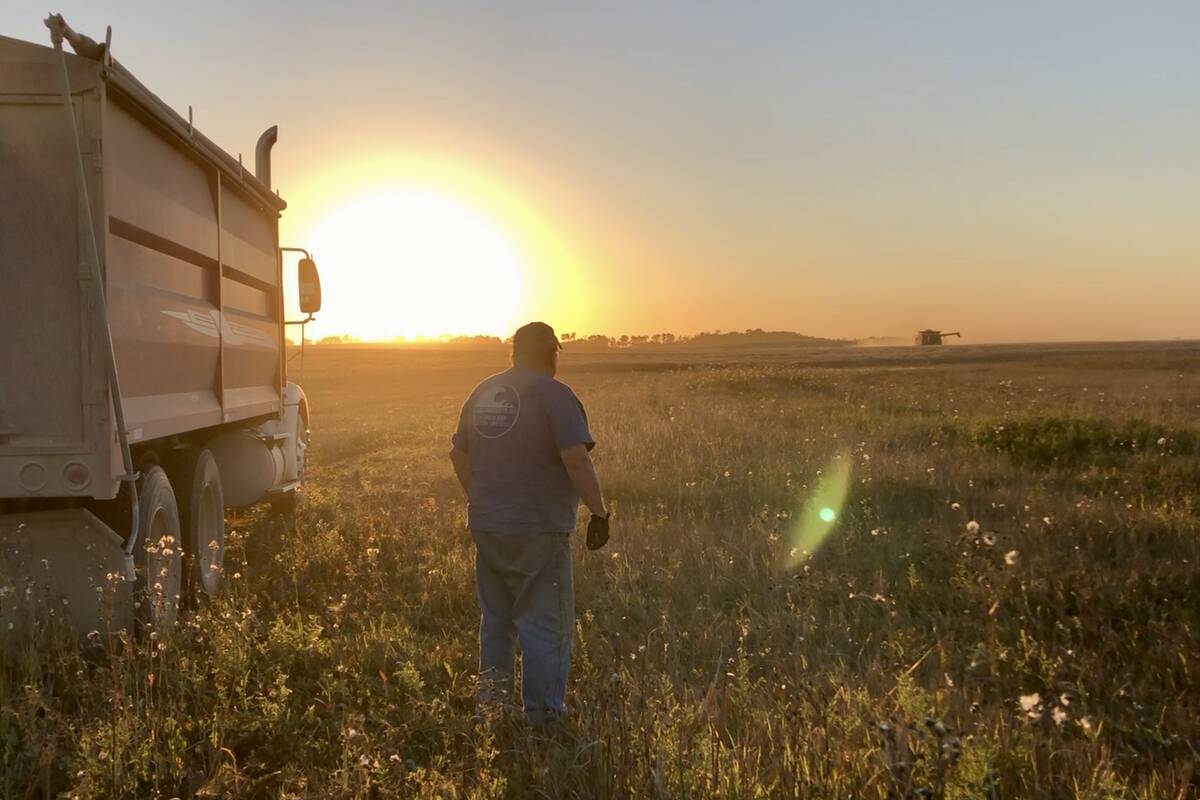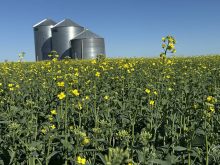Ernest Andersen is furious that his local elevator is plugged.
The Coronach, Sask., farmer figures he loses about 50 cents per bushel from having to haul his peas from the combine to home and then pay to truck them to the elevator when it clears. All the extra handling may cause peas to split.
“I want all my peas in off the combine, but I can’t because they’re plugged,” said Andersen, fuming at what he expects to be a $3,500 additional cost for his 7,000 bu.
He is particularly aggravated because some of the grain plugging the elevator is American-grown peas that benefited from subsidies under the U.S. farm bill.
Read Also

VIDEO: Bittersweet harvest for this family farmhand
Bruce Burnett helps his brother harvest wheat and canola for the last time on the family farm in Manitoba where they both grew up.
Plugged elevators are a headache and a cost that thousands of Saskatchewan farmers may soon face as harvest picks up steam.
The grain elevator system in southern Saskatchewan is clogged as a new crop comes in, reducing farmers’ chances of moving product quickly off the combine.
“It’s going to happen,” said farm marketing adviser Errol Anderson.
“We’re going to congest. There’s just not enough movement with this big crop coming.”
The Canadian Wheat Board is worried about the situation.
“There’s a space problem in the country,” said board spokesperson Maureen Fitzhenry.
The most recent survey of elevator space shows the problem is centred in Saskatchewan, with only 24 percent open space in the province’s elevators.
“At this time of year we’d like to see closer to 30 percent,” she said.
Alberta and Manitoba do not have the same problem. The board puts space in Manitoba at 45 percent and Alberta at 33 percent.
Lynn Ramsay of James Richardson International, which owns the Pioneer elevator system, said the crunch is greatest in durum growing areas.
Slow durum movement and overall slow movement of grain have clogged many elevators.
“A lot of it is lower grade, so movement tends to be slower,” she said.
Fitzhenry said the board could see problems coming during the spring but wasn’t able to speed producer deliveries sufficiently to avoid the problem.
Advertisements and News release
newss to farmers in late spring and early summer had only limited effect.
“It didn’t work very well. It’s a bad time of year for farmers to think about delivering, because they’re too busy with other things, like seeding,” said Fitzhenry.
The problem is hardly surprising because of the limitations of the Canadian system.
“The logistics of the system are very tricky,” she said.
“It’s a narrow pipeline and everyone knows the capacity in the Canadian system isn’t large. We’ve got a lot more grain than can go through at any one time.”
Anderson, the adviser, said farmers are going to be nailed with bad basis levels at harvest time, especially on the big canola crop.
“Canola’s going to plug right up. Basis levels going into September could get absolutely brutal. If farmers are hurt this fall, they should learn to adopt a marketing plan. Growers should know better,” said Anderson.
“We knew we had a huge crop coming and we know we have a system that can’t handle it.”
Anderson said farmers should have arranged deferred delivery contracts or used other forms of risk management to prevent being squeezed if a problem like this develops.
“The guys that do nothing are really going to get hung,” said Anderson.
Subsidized peas
For Andersen the farmer, it will always be frustrating to lose money because of a clogged elevator, but what particularly rankles is the presence of eight rail car loads of American peas in the elevator.
He considers those peas subsidized by American government programs to have been dumped into his backyard. It is a galling situation at a time when American farm groups are complaining about Canadian farm products coming into their market.
“First it was the wheat, then it was the durum, then it was the pigs, then it was the lumber, then it was the cattle,” said Andersen.

















